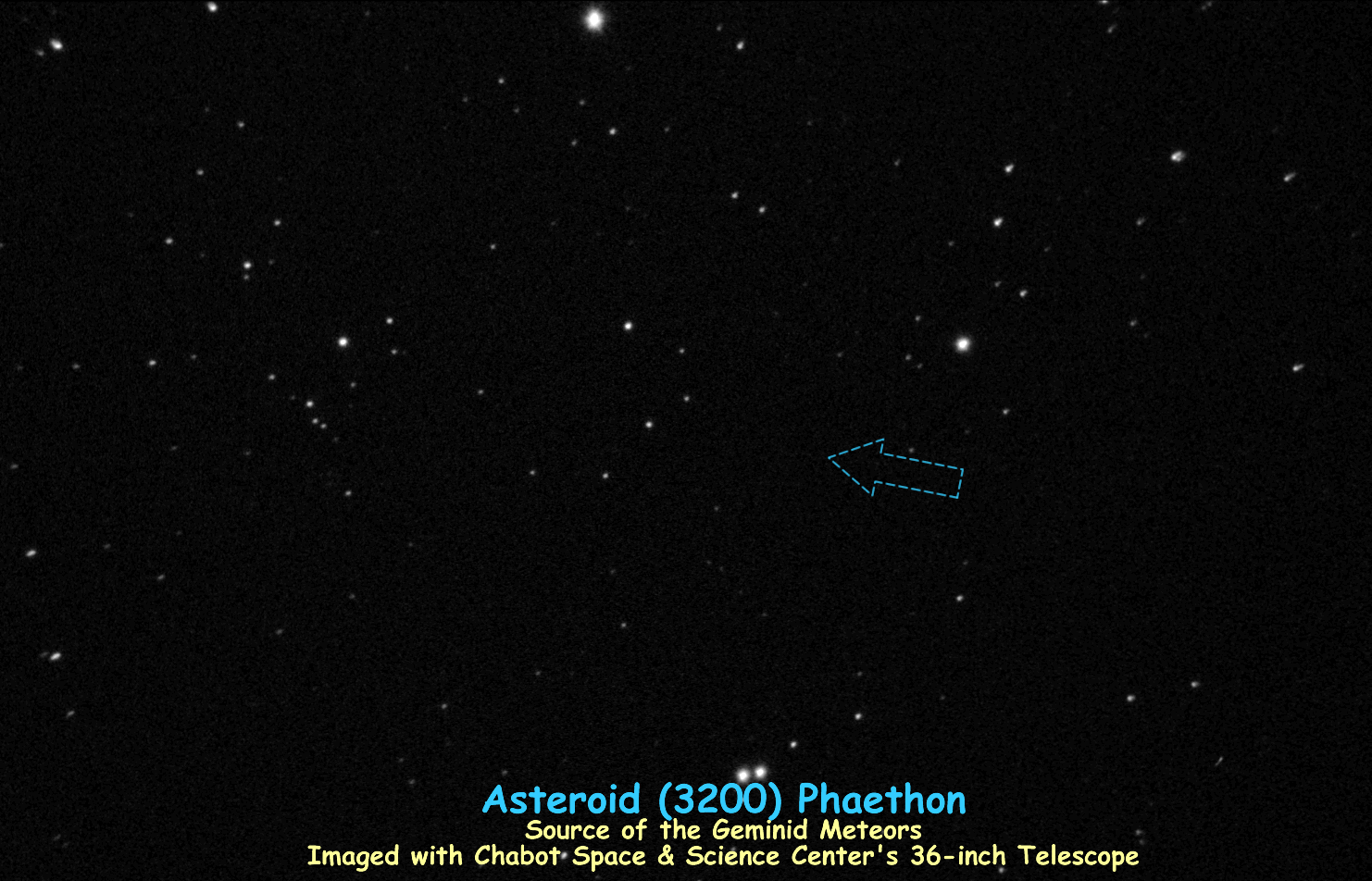The Geminid Meteor Shower and Its Unique Origins

This Friday, December 13th is one of the biggest annual astronomical treats of the year: the Geminid Meteor Shower. Every December, we look forward to curling up and hoping to see an expected 50-100 meteors an hour.
However, as luck would have it, we’re expecting rain and fog this Friday the 13th. Unfortunately, Chabot’s Geminid Meteor Shower viewing is cancelled, but that doesn’t mean there isn’t still something we can learn from this unique astronomical event.
The Geminid Meteor Shower is the only shower to come from an asteroid, not a comet. Astronomers didn’t know the source of the meteors until 1983, and what did they find?
WHERE DO THE GEMINID METEORS COME FROM?
The Geminid Meteors are small, rocky particles left behind by the asteroid (3200) Phaethon, which orbits the Sun every 17 months on a path that brings it very close to Earth’s orbit. Although Phaethon is now designated as an asteroid, its orbit suggests it may be an old, no longer active, comet that lost most of its volatiles.
HOW DOES PHAETHON CREATE METEORS?
Phaethon’s orbit swings it around the Sun well inside the orbit of Mercury. When it is at such a close distance, the Sun’s heat and solar wind cause dust, rocky grains and pebbles to rise off the surface of Phaethon with enough velocity to escape Phaethon’s weak gravity and stream into their own orbit around the Sun. Each year the Earth passes through that stream of orbiting particles on or near December 13th. When those particles enter the Earth’s atmosphere, they burn up, creating meteors that streak across the sky from the direction of the constellation Gemini. Hence the name Geminid Meteor Shower.
A VIEW FROM CHABOT
In November of 2014, (3200) Phaethon passed close enough to the Earth that it was an easy target for Chabot’s 36-inch reflecting telescope, Nellie. The attached animation was made from five individual images shot with Nellie over a 40 minute period. The word “asteroid” means “star like,” and as the animation shows, asteroid Phaethon looks just like a star, except that it is moving.





